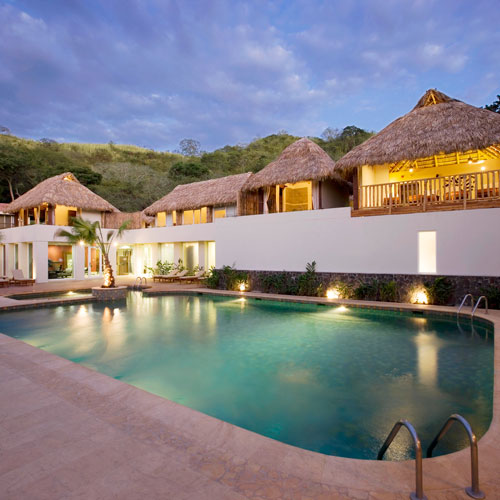Scott and Ally Svenson pioneered the build-your-own-pizza concept when they opened the first MOD Pizza location in Seattle in November of 2008. The “fast-casual” chain has quickly become king of DIY pizza restaurants and has been dubbed the “Chipotle of pizza” by the media. As of press time, there were 65 MOD locations throughout 12 states, but the number is expected to balloon to roughly 200 by the end of 2016.

“We opened our first store when Lehman Brothers was collapsing and the economy was headed in the wrong direction,” says Greta Pass, MOD’s vice president of real estate. “The founders were inspired by the couple’s love of Italian street-style pizza and their desire to create an authentic, affordable and fast dining option for busy families.”
The Svensons had already built two highly successful restaurant concepts—Seattle Coffee Company, which was acquired by Starbucks in 1998, and Carluccio’s, a UK-based Italian restaurant chain that recently moved into the US market. With MOD Pizza, the goal was to create a restaurant with “a purpose beyond pizza, a sustainable company that uses its success as a force of good,” Pass says. That purpose has everything to do with making people feel good—both employees and customers. “That’s what is fueling our expansion across the US and beyond,” Pass says (at press time, an announcement of the first MOD location outside the United States was imminent). “MOD does not measure their success by store count, but rather by the number of employees hired and the number of lives that we touch.”
When someone walks into a MOD Pizza location, they’re not likely to feel as though they’re entering a national chain restaurant. Employees are coached to greet customers with a warm “Hello!” and engage in conversation while taking their order. By the time they’ve selected from more than 30 available toppings and perhaps chatted about their day, the three to four minutes required to bake the pizza in MOD’s 800-degree ovens has quickly passed. Prices vary slightly by region, but in the Pacific Northwest, a personal pizza costs $7.47; a heaping bowl of build-your-own salad is the same price. The ambiance is made even more lively by the energetic, up-tempo tunes that pulse through every MOD location—the company has its own music station based loosely on the London’s underground mod music scene of the 1960s (which also can be streamed online).
Store design is intended to further enhance the MOD Pizza cultural experience, which starts with the MOD Squad (the employees) and the music featured in each location. High ceilings are par for the course and most locations include large garage-style doors that open out onto a patio. The patios have a railing that separates them from public spaces, so patrons can venture outside with one of the local craft beers or wines that are featured on the menu (in jurisdictions where it is allowed). Seattle-based Graphite Design Group is the architectural firm responsible for the design of many of MOD’s locations, especially in the Pacific Northwest. “We’re very pleased with their support and their services and are proud to have them supporting the MOD Squad,” Pass says.
While the furnishings may be somewhat similar in all the locations, part of what identifies the MOD brand is the design components that are different in each store. These might take the form of artwork, a mural or an architectural relic of some sort. These objects are not chosen at random, but actually for their relevance to the local community. “We find what’s really important to that neighborhood and we incorporate those pieces within each store, so that each store is truly localized and special to that neighborhood,” Pass says.

Each location has its own unique “Wall of Fame” as a way of further cementing its connection to local patrons, Pass says. A MOD Wall of Fame might include pictures from people in the neighborhood, mascots of local high schools or sports teams, locals celebrating over pizza, children’s birthdays at the restaurant and lots of pictures of the Mod Squad. “Each wall is different but it’s always full of faces—friends, families, people enjoying MOD,” Pass says.
She adds that the company has sited their stores in a variety of settings with equal success, ranging from dense urban areas to suburbs and even small towns. However, Pass says the company’s favorite niche thus far has been in “daily need centers,” or shopping districts that have a bank, grocer, and retail stores—places where families go for their shopping and daily errands that is within convenient reach of their homes.
“One thing we do know is that families with kids love MOD,” she says. “We say the 6- to 16-year-old is one of our biggest customers.” Following this logic, many MOD locations are found near schools, recreational facilities, and in single-family neighborhoods.
Another distinguishing feature of MOD Pizza’s corporate strategy is to focus on company store growth, as opposed to franchising. So far, only about 8 percent of the stores are franchises. “It’s really important to us that we maintain our product quality and consistency throughout the chain—most importantly, the culture and what we’re providing for employees and our customers,” Pass says. “By focusing on company store growth, we feel like we will be able to do that. The larger we get, the smaller we have to behave.”


